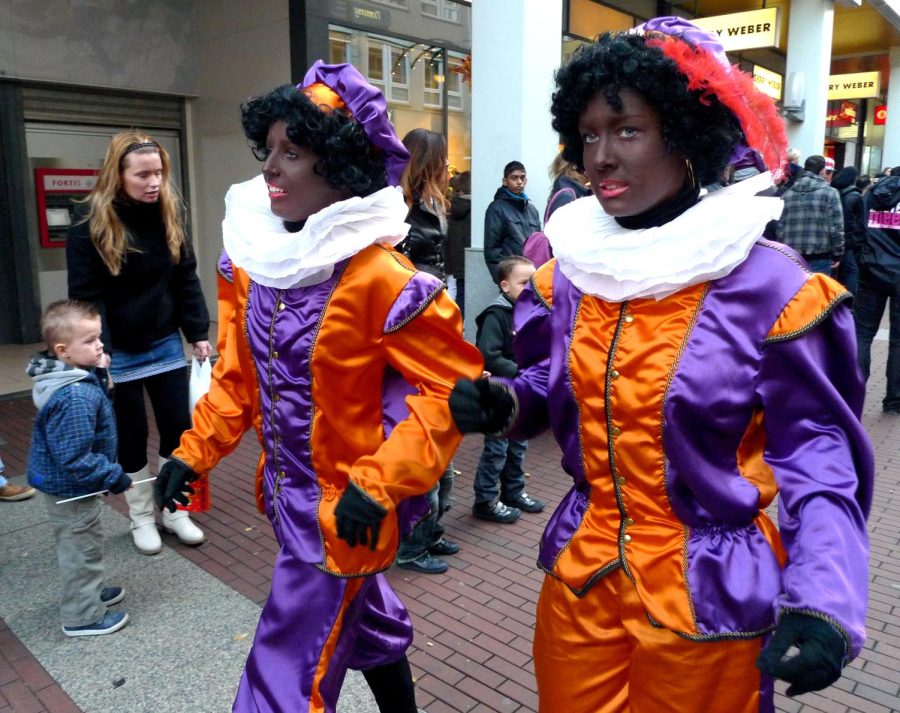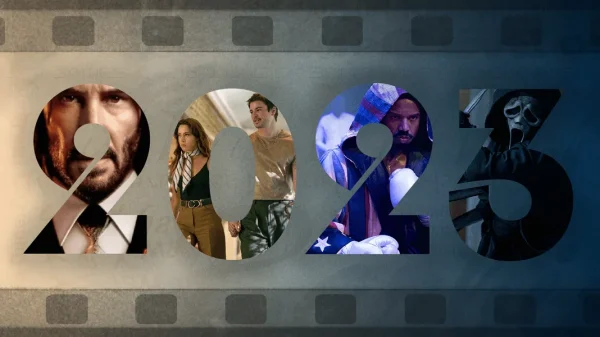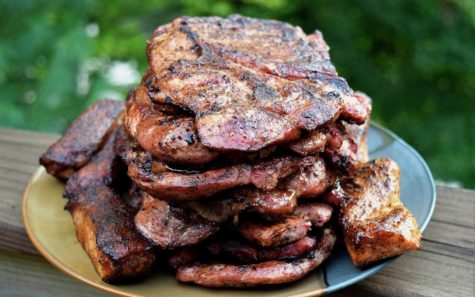A Troubling Tradition
December 16, 2022
The Netherlands has pioneered many global Christmas traditions like St. Nick’s Day, but the Dutch also have their fair share of unique local traditions. One such tradition is dressing up as Zwarte Piet (“Black Pete”) to celebrate the holidays. To understand the implications of this tradition, a brief history of who Zwarte Piet is and how he originated is required.
Sinterklaas or Sint-Nicolaas is a legendary figure who originated in the Netherlands. He is based on Saint Nicholas, who was an actual bishop living in modern-day Turkey, and his feast is celebrated on December 6 with an annual gift-giving on St. Nicholas’ Eve. In the United States and several other countries across the world, this feast of Sinterklaas has morphed into what we call St. Nick’s Day. Sinterklaas is often accompanied in stories by Zwarte Piet, his helper who was dressed in Moorish clothes and blackface. The first appearance of Zwarte Piet as Sinterklaas’ servant was in Sint-Nikolaas en Zijn Knecht (“St. Nicholas and His Servant”), which was published by Jan Schenkman, an Amsterdam schoolteacher, in 1850. Zwarte Piet usually wears colorful attire, which is based on 16th-century noble dress, with a feathered cap, and he is typically depicted with a big bag full of candy for good children.
Zwarte Piet has also been depicted as carrying a roe (birch rod), which he would use to beat children who were not behaving or had been naughty. Some legends have it that he would then put the naughty children in his bag and take them back to Spain. This alluded to the Barbary slave trade, a set of raids carried out by pirates along the coasts of Iceland, the Netherlands, Italy, Ireland, and the southwest of England, and all the way as far as the Eastern Mediterranean. The people taken in these raids would be forced into slavery in Africa under the rule of either the Ottoman Empire, which included Algeria, Tripolitania, and Tunisia, or the Moroccan Sultanate. So at this point in the legends, Zwarte Piet is already being painted as a pirate and conqueror.
Through the years, many iterations of Zwarte Piet have been added to accommodate for each task Sinterklaas needs help with. For example, there is a Head Piet (Hoofdpiet), a Presents Piet (Pakjespiet), who wraps all the presents, a Navigation Piet (Wegwijspiet), who navigates the steamboat from Spain to the Netherlands, and Acrobatic Piet (Acrobatischepiet), who climbs up the roofs and up and down the chimneys. Zwarte Piet is originally said to have been a Moor from Spain, but now, to rectify the racist undertones in the depiction of Zwarte Piet, some children are told that Zwarte Piet’s face is blackened from the soot in the chimneys. Television channels have now started depicting Zwarte Piet with only soot smudges, as roetveegpieten (“soot-smudge Piets”) or schoorsteenpieten (“chimney Piets”).
Recently, there has been huge backlash to the tradition of putting blackface on to look like Zwarte Piet. This backlash against the popularity of blackface around Christmas has given rise to political division related to this questionable tradition. A person in favor of the tradition would argue that Zwarte Piet is an integral part of their cultural identity and tradition, whereas a person against the tradition of dressing up as Zwarte Piet will argue that the tradition is inherently racist and portrays dark-skinned people in general in a very derogatory way, simply a continuation of the colonial tendency to view the natives as nothing more than animals.
The origin of Zwarte Piet is indeed deeply rooted in colonialism, because the period between 1850 and 1880 was the height of colonialism in Africa. During this time period, Belgium, France, Germany, and Britain were all fighting over colonial rule in Africa. It was a time of outright invasion and exploitation of the natives of Africa. Not surprisingly, there were uprisings and revolts against colonialism all over Africa during this time. Nevertheless, the time period for the creation of Zwarte Piet and the depiction of him shows great evidence that his creation had great ties to colonialism and may have been a representation of the backlash against the “noble cause” of enlightening Africa to the European way just as the Romans did to the Britons. This is obviously all from the perspective of the colonists, which begs the question is the purpose of Zwarte Piet fully meant to assimilate racism or is Zwarte Piet some legendary character that accompanies Sinterklaas on his jolly journeys. These questions are important to ask because as time progresses in order to maintain community and cohesion in society we must analyze traditions and continue to reevaluate if they are still ethical. Does their deep-rooted cultural significance outweigh their effect on a certain group of people?
These types of debates are a hot topic nowadays, and there have been several movements and petitions to the Dutch government to do something about this troubling tradition. Some change has arisen from these efforts, as evidenced by the fact that fewer people are using blackface to dress up as Zwarte Piet and are only wearing the colorful robes instead. We live in a world that is full of controversy, division, and debates like that over Zwarte Piet, and if we ever want to reconcile these differences of opinion, perspective, and belief, there has to be compromise.









